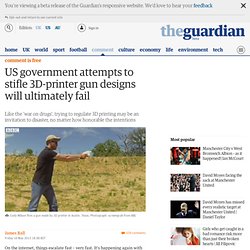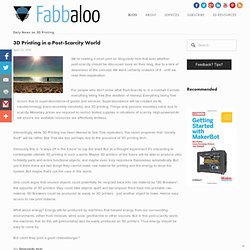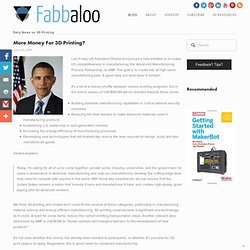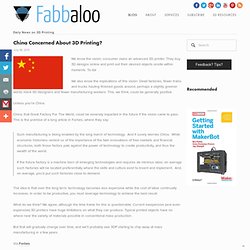

US gov. tries 2 stifle 3D-printer gun designs. On the internet, things escalate fast – very fast.

It's happening again with the blueprints for the first "completely" 3D-printable gun (it's not entirely complete: neither the bullets nor the firing pin is printable). Cody Wilson, who designed the prototype, posted the blueprints online for anyone to download. After two days, and 100,000 downloads, the State Department ordered him to take them down. The plans, they explained, violate US export controls on armaments. The problem isn't so much US citizens downloading the plans, but the somewhat abstract risk of sanctioned groups, or those affected by export bans, downloading the plans and printing armaments. The result of these arguably good intentions has been predictable: it's had exactly the opposite effect to what the State Department wanted.
This is a very early – and ultimately, probably insignificant – cock-up in what could easily descend into a protracted online war. But the wider political danger it could represent is huge. The Project. Emergent City / Joseph A. Sarafian. “Emergent City” is Joseph A.

Sarafian’s 5th year Thesis project at the University of Southern California in Los Angeles. “By the turn of the Twenty-Second century, a new epoch in global survival had emerged. The human race was no longer concerned with sustainability as a trend, because it could no longer deny the fact that the world was in fact dying. The environmental catastrophes that surfaced in the Twenty-First century became increasingly frequent. Barraged with hurricanes, tornadoes, earthquakes, and tsunamis, mankind was at the brink of extinction. What emerged was a new strategy in the toolset of disaster housing, but more importantly evolution.
To commemorate the 9th Annual Skyscraper Competition, eVolo is publishing the Limited Edition Book "eVolo Skyscrapers 2" which is the follow-up to its highly acclaimed book “eVolo Skyscrapers”. -> EVOLO SKYSCRAPERS 2 - Limited Edition Book. 3D Printing in a Post-Scarcity World - Fabbaloo Blog - Fabbaloo. We're reading a short post on Singularity Hub that asks whether post-scarcity should be discussed more on their blog, due to a lack of awareness of the concept.

We were certainly unaware of it - until we read their explanation: For people who don’t know what Post-Scarcity is, in a nutshell it entails everything being free (the abolition of money). Everything being free occurs due to superabundance of goods and services. Superabundance will be created via AI, nanotechnology (nano-assembly nanobots), and 3D printing. Things only possess monetary value due to scarcity. Interestingly, while 3D Printing has been likened to Star Trek replicators, this vision proposes that *society itself* will be rather Star Trek-like too, perhaps due to the presence of 3D printing tech.
Obviously this is "a ways off in the future" to say the least! What about energy? But could they print a good cheeseburger? Should “Post-Scarcity” be a more prominent Singularity topic? More Money For 3D Printing? - Fabbaloo Blog - Fabbaloo. Last Friday US President Obama announced a new initiative to increase US competitiveness in manufacturing: the Advanced Manufacturing Process Partnership, or AMP.

The goal is to create lots of high value manufacturing jobs. A good idea, but what does it involve? It's a bit of a money shuffle between various existing programs, but in the end in excess of USD$500M will be directed towards these areas: Building domestic manufacturing capabilities in critical national security industriesReducing the time needed to make advanced materials used in manufacturing productsEstablishing U.S. leadership in next-generation roboticsIncreasing the energy efficiency of manufacturing processesDeveloping new technologies that will dramatically reduce the time required to design, build, and test manufactured goods Obama explains: It's not clear whether this money has already been seeded to participants, or whether it's possible for 3D print players to apply.
China Concerned About 3D Printing? - Fabbaloo Blog - Fabbaloo. We know the vision: consumer owns an advanced 3D printer.

They buy 3D designs online and print out their desired objects onsite within moments. Ta da! We also know the implications of this vision: Dead factories, fewer trains and trucks hauling finished goods around, perhaps a slightly greener world, more 3D designers and fewer manufacturing workers. This, we think, could be generally positive. Unless you're China. China, that Great Factory For The World, could be severely impacted in the future if the vision came to pass.
Such manufacturing is being enabled by the long march of technology. The idea is that over the long term, technology becomes less expensive while the cost of labor continually increases. What do we think? But that will gradually change over time, and we'll probably see 3DP starting to chip away at mass manufacturing in a few years.